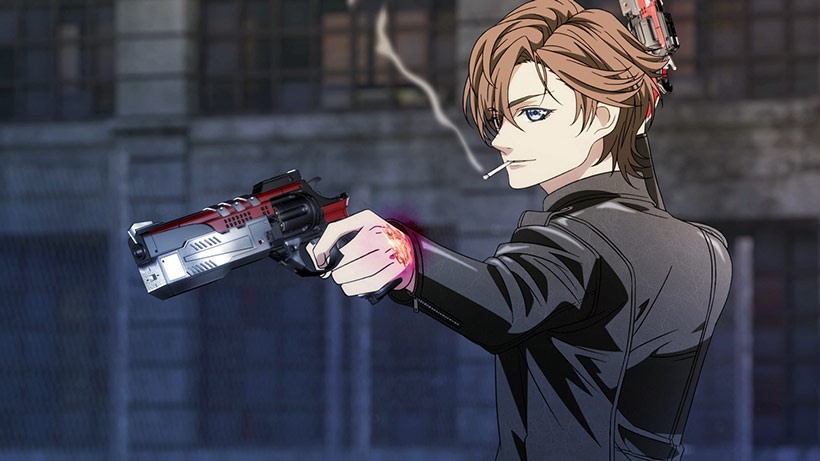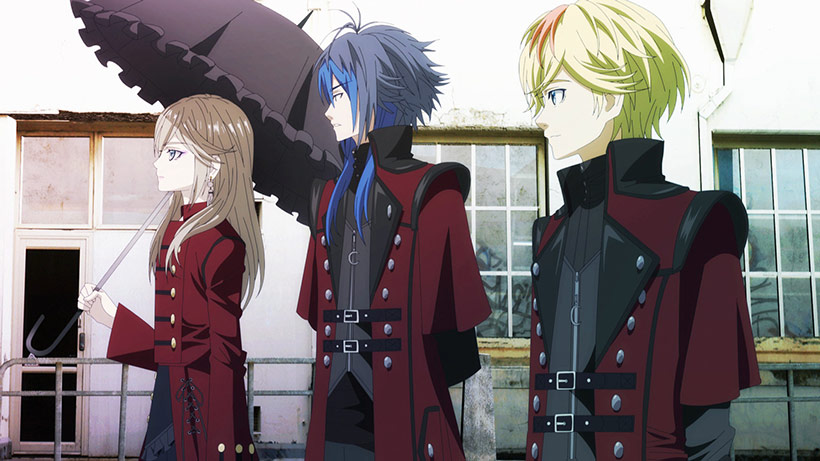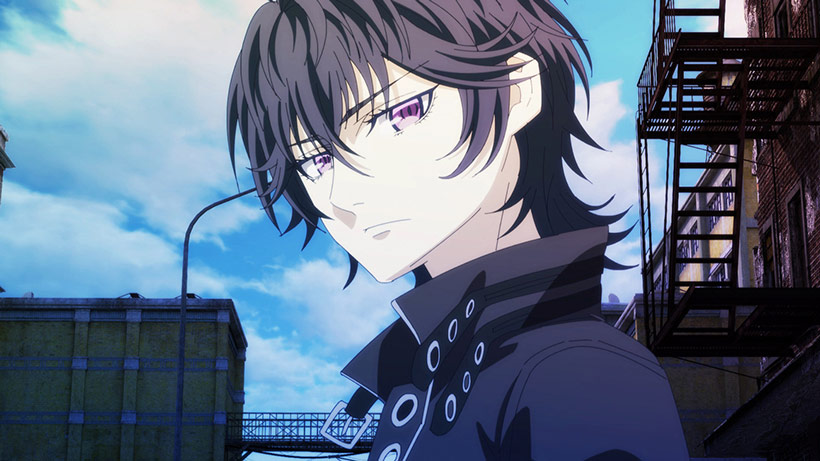Scar on the Praeter is a weird name for an anime. Thankfully, the anime is also a little weird and quirky with an assorted cast of rather bishi men full of hyperbolic explosions.
In Scar on the Praeter, a section of Tokyo named Akatsuki has become an independent state which has fallen to lawlessness and corruption. Within this zone are three competing organisations who attempt to exert and often wrestle for control over the area through the use of agents with supernatural powers inherited from legendary divine creatures known as Scards. Helios, the smallest of the organisations active in Akatsuki, are focused on looking after the innocent and often homeless people caught up in the larger mechanisations and corrupt politics. After a tragic encounter with the legendary Scard, Eiji Arashiba, Helios newcomer Yamato Kai emerges as the latest member of the group with a passion for using his newfound powers to benefit the many victims caught up in the war-stricken Akatsuki district.

Scar on the Praeter is a really interesting concept of an anime from beginning to end. The super-sculpted cast of bishounen leads juxtapose against the derelict urban environments that closely echo areas of the United States rather than being an independent Japanese nation-state of sorts, while the paramilitary conflict and fusion of firearms, handheld blades and magic should be incoherent in practice.
Even the production style is odd – all the environmental elements are 3D CGI and heavily processed, with the hand-animated characters lavishly executed despite the uncanny valley of sorts when all these elements are mashed together during scene composition.
The story takes inspiration from dramatic wuxia-inspired martial arts sources, cinema noir, political thrillers and loads up plenty of eye candy for those into bishi characters.

All of these disparate elements should clash into a murky soup of an anime whose cacophony of ideas that should place it in firm company with the golden era of OVAs where stories were often crushed into short run-times and adorned with lavish animation with typically mixed results. In practice, it’s not hard to argue this series is something of a hot mess, but I found myself incredibly surprised with how much I enjoyed it.
Scar on the Praeter doesn’t innovate or do something entirely new or outstanding, but I think the almost video game-like presentation worked to its favour in this case. I’m generally not a big fan of excessive use of 3D CGI in anime – I understand it’s part of the process and sometimes it can be used quite effectively to ease the production schedule without looking too wonky. Often though I find myself somewhat irked when it’s overplayed (like the Berserk trilogy of films) or downright disengaged (as was the case with Shin Sakura Taisen). For whatever reason though, I didn’t mind the craziness of the visuals and I think this is in large part down to the resourcing pushed towards the animation thereof.

The combination of visual design, over the top story and sheer silliness at times worked to its favour – as a production, I think it pulled it off and while it won’t leave you re-assessing your top 10 list of anime, it made for a fun rollercoaster of a ride.
For the local release of Scar on the Praeter, Crunchyroll (I’m still getting used to not saying Madman!) have brought over the US release which means we get my favourite cardboard sleeve embellishment! As the usual, this is a bilingual release with the episodes spread over two discs. Extras are minimal with the usual ops/eds and promo videos.

Scar on the Praeter is a fun and engaging series that happily indulges in its excesses. If you’re into a hyper-processed action anime that takes inspiration from a variety of Japanese and Western media you’ll have plenty to enjoy here.
A review copy was provided by Crunchyroll to the author for the purpose of this review.





